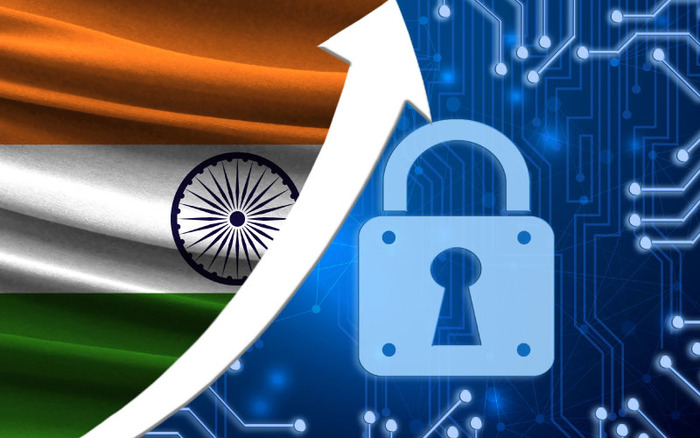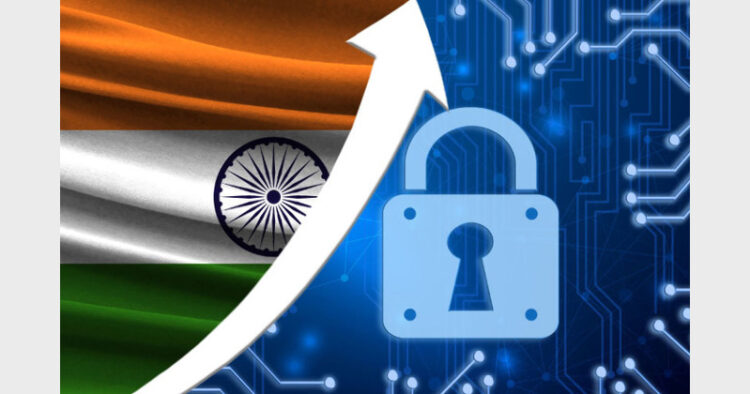T.S. Chandrashekar
Indian Computer Emergency Response Team (CERT-In) tracked a massive surge in cybersecurity threats over the past few years.

Earlier Wars were fought in the battleground civilians were not targeted critical infrastructure was never disturbed soldiers won and died for their nations. The present War is not with bullets and bombs but technology; wars are not fought in the battleground but within civil society of a Nation and world. Now Individual Family are directly affected, critical infrastructure are bombarded, enemy targets include public utilities like electricity, water, transport, schools systems, malls, manufacturing, pharma production and more. The “less-than-lethal” additional arrow in the quiver to disrupt, disorient and disarm Nations are no longer sole actors, as terrorist groups and criminal organizations extend their reach across borders via cyber channels.
It was on 8 June 2017 Former Indian Army Chief Gen Bipin Rawat had said “Indian Army is fully prepared for a simultaneous multi-front war on both external and internal fronts. “Indian Army is fully ready for a two and a half front war,” referring to China, Pakistan, and the internal security threats. Then on 11 June 2021 as Chief of Defence Staff General Bipin Rawat, further said: “China a bigger security threat than Pakistan.”
The question now for India is are only visible enemies our threat or the new Technological “less-than-lethal” or Biological War or Supply Chain Industrial War a threat to India? How to see this invisible new threat who are not only Nations but also have within them terrorist groups, criminal organizations and sometimes individuals?
Cybercrime is predicted to inflict global damages totaling $6 trillion in 2021. In America, Ransomware attacks are striking every eight minutes, crippling hospitals’ mainstays like gas, meat, television, police departments, sports, ferries to Vineyard. July 2, U.S. software provider Kaseya was hit with a ransomware attack, Colonial Pipeline became world news. They’ve reached the control switches at American power plants and breached nuclear plants too. There was a power shut-in Ukraine twice by hackers the list goes on….
So now Malware serves acts as ammunition, hackers and cybersecurity specialists serve as soldiers, and the battle is for data. Recorded Future’s American cybersecurity firm had said Chinese state-backed hacker group is targeting Indian defense research and other Indian organizations. Chinese state-sponsored threat activity organization known as RedFoxtrot has been active in India since 2014, primarily targeting aerospace and defense, government, telecommunications, mining, and research firms. The operations against India fall under the operational remit of PLA Unit 69010.
In India, all sectors, including manufacturing, services, education, and healthcare, were targeted by this invisible enemy. As per the information reported to and tracked by the Indian Computer Emergency Response Team (CERT-In) a massive surge in cybersecurity threats over the past few years. There were 53,117 cases of cyber attacks in the country in 2017. This had risen to 208,456 in 2018, 394,499 in 2019 and 11, 58,208 in 2020. Research firms and experts said cases are likely to increase in 2021 and all sectors may see more such attacks.
The government has taken several measures to enhance cybersecurity systems. It has issued guidelines for chief information security officers regarding their key roles and responsibilities for securing applications and infrastructure, and compliance. It has also mandated regular cybersecurity audits and mock drills. The National Cyber Coordination Centre (NCCC) has started to generate situational awareness of existing and potential cybersecurity threats. Phase I of the program is already operational, the ministry said. CERT-In has also issued “alerts and advisories regarding cyber threats and vulnerabilities and countermeasures to protect computers and networks regularly”, it said.
““With proliferation in internet and mobile phone usage, there is a rise in the number of cybersecurity incidents in the country, as well as globally. Proactive tracking by CERT-In, including its Cyber SwachhtaKendra and NCCC, and improved cyber security cybersecurity ministry of electronics and information technology had told the Lok Sabha in September.”
Finally, one can say that in an inter-connected and inter-linked world more aspects of our lives are becoming dependent on technology and connectivity to the internet. As a result, we present a much wider attack surface than ever before. It’s likely, therefore, that we will see more disruptive attacks in the future. India’s national airline Air India cyber-attack which affected about 4.5 million customers around the world, National Highways Authority of India cyberattack when it shut down its server then as a precaution are some of the instances where India is targeted every day.
India raised concerns about cross-border state-sponsored cyber attacks during the United Nations Security Council (UNSC) Open Debate on “Maintenance of International Peace and Security: Cyber Security”. Foreign Secretary Harsh V Shringla, hit out at neighbors that have increasingly posed threats to India in the cybersphere. India is witnessing a sophisticated use of cyberspace by terrorists to broaden their appeal, spread virulent propaganda, incite hatred and violence, recruit youth and raise funds. There are widespread concerns that state and non-state actors are introducing vulnerabilities and harmful hidden functions, including through backdoor channels, into ICT networks and products.
In that regard India asked Nations that we cannot work in “isolation” and member states have to adopt a “collaborative” rules-based approach in cyberspace and work towards ensuring its openness, stability, and security. He went on to say that “open societies” have been “particularly vulnerable” to cyber-attacks and disinformation campaigns, as opposed to states like China that control all forms of online communication.
To conclude one can say that India is not only in “Two and Half War” but with many. China, Pakistan, Internal Threat, and the addition is Biological War that is Lab Leaks hide information, Chemical Warfare and the present day Cyber War: The Drone attack recently in Jammu was a good eye-opener. This Cyber War and Biological and Chemical War are cheap, dirty, dangerous, and difficult to identify as they work invisibly. So India has all the strength to fight Conventional War but, non-Conventional India has to become the Next Leader.
The author is a Political Analyst, Columnist, International Affairs & Korea Expert.













Comments